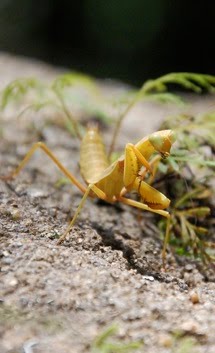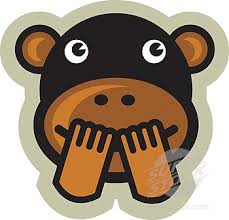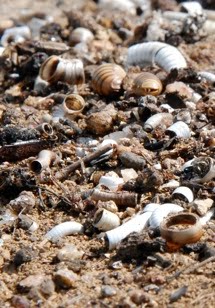Creepy Animal Museum (Warning: I'm not kidding, it really is a bit creepy. There are some graphic, but scientific images of people and a horse.)
You don't have to travel back in time very far before things turn a bit different. When your parents were born they couldn't grow up dreaming about being a web page designer, because the internet didn't even exist. When your great-grandparents were born, they couldn't imagine being paid to fly planes through the great blue sky, because no one had ever built a plane before. Now what about your great-great-great-great-great-great-great-great-great-grandparents? Imagine 4,000 years ago.
What jobs to think you could have then? Animals are awfully cute and cuddly Do you think you could be a veterinarian? Well, that is an incredibly long time ago, but, yes, you could have indeed been a vet.
Taking care of animals is one of the oldest jobs in the world. That's because animals and people have been living together for ages. Archeologists, (history experts who study very old people and places), have even found a 9,500 year old grave with a person and a cat buried together. And there's a dog and human sharing a grave from 14,000 years ago. Here's a weird one, guinea pigs were domesticated (turned from wild animals into farm animals) 600o years before turkeys.
Egyptians wrote about vets taking care of animals 4000 years ago, so that means someone had to be teaching people how to be a vet. And if there are teachers, there are schools. Now, none of those really old schools still exist, but there is one vet school that is is quite old. The oldest vet school in the world in fact. It is in Paris and we were lucky enough to visit it. At the school, vets have been learning how to take care of animals for 230 years. That's a long time to collect some really cool things that vet school students use (and I'm not talking about pencils and erasers).
Remember, there is no internet, so no Google and no Wikipedia. So students who want to see what a sick animal looks like, need to see actual sick animals. So people came up with ways of keeping dead animals so they didn't turn all smelly and disgusting. They dried the animals. They made models of the animals. Sometimes they even injected the dead animals with plastic to make special models that still exist even today. It's all a bit creepy, but cool.
Have a look!

Would you call this animal a "splamb" or a "lamider"? Well, it is a lamb with eight legs just like a spider, but it is still called just a lamb. The French actually have a name for animals with birth defects like this. They call them monsters. This lamb was also beside a lamb with two heads and just four legs. Most of these poor animals don't live very long.

They have more than just the animals themselves. They also have things they found inside of animals. All of you who have been 2nd graders know that we eat minerals and need those minerals to help our bodies be healthy. You also know that minerals are what make rocks. Well, sometimes those minerals you eat in your spinach, milk or cereal turn back into rocks inside of you. A little bit of something can get caught in your stomach or intestines or gall bladder and the tiny minerals can start sticking to it. And more minerals stick to those. And more minerals and more... All those minerals make a rock that is now stuck inside of one of your organs. The rock in this picture was found inside a horse's gall bladder. It is a little bigger than a football and weighs as much as a kindergartner. Ouch!

But not all the rocks are that big or that grey and ugly. The little rocks in this photo are beautiful pearls, but they didn't come from oysters. These pearls came from inside a COW!

I bet you thought cyclops was just a monster from old stories. Well, here is a real cyclops monster. This piglet was born with just one eye.
As not to scare anyone too much, I made these pictures small. If you're not scared, click on them to make them much larger.


Vet students aren't the only ones that needed models. Doctors needed them too. These are models from one of the best model makers who ever lived. He made these models more than 200 years ago and these are not fake models. They are real people (and that's a real horse) who are over 2oo years old. It is amazing to see how complicated our heads are. There are so many muscles, blood vessels, tendons, nerves, veins...














 They are still there, but they are really tiny and useless. Some snakes have two very tiny bones that used to be their back legs too.
They are still there, but they are really tiny and useless. Some snakes have two very tiny bones that used to be their back legs too.










